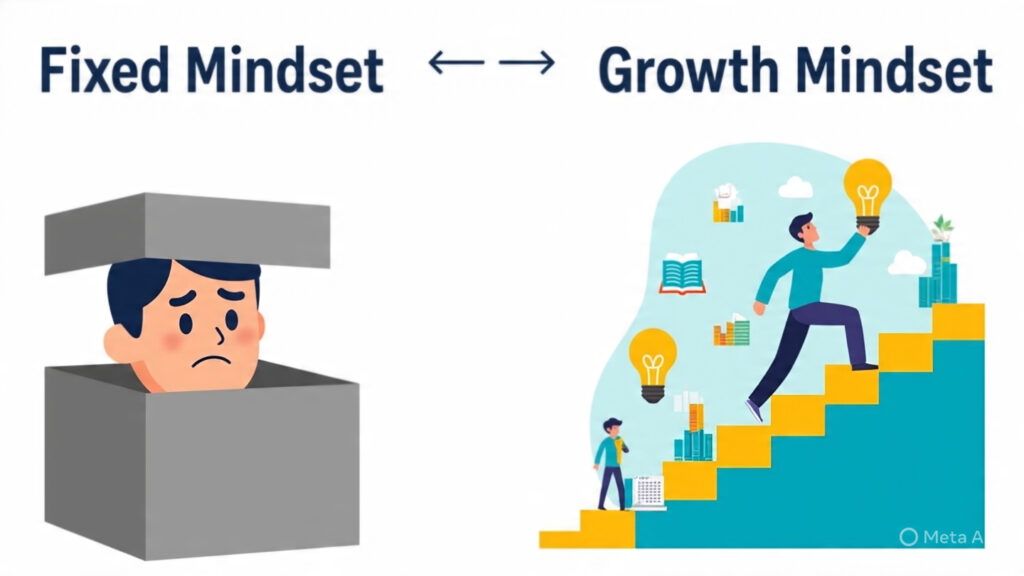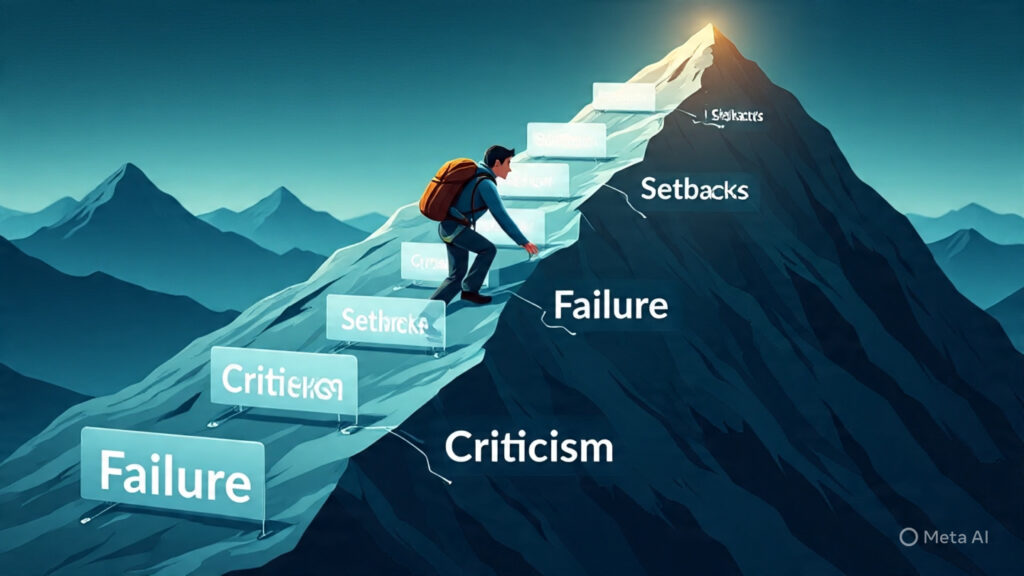Introduction
The path to achieving your goals is rarely a straight line. It’s filled with challenges, setbacks, and moments of doubt. But what if you could shift your thinking so that obstacles became opportunities for growth? That’s the power of a growth mindset. Instead of believing that abilities are fixed, a growth mindset embraces the idea that talents and intelligence can be developed through dedication and hard work.
This isn’t just a motivational concept—it’s a scientifically supported framework for resilience, innovation, and success. If you’ve ever wondered how to develop a growth mindset, this guide will show you proven principles, strategies, and daily practices to help you unlock your full potential.

Understanding the Core Principles of a Growth Mindset
To truly learn how to develop a growth mindset, you first need to understand how it differs from a fixed mindset.
Fixed vs. Growth Mindset
Psychologist Dr. Carol Dweck’s research identified two key mindsets:
- Fixed Mindset – Believes intelligence and abilities are innate and unchangeable. Avoids challenges, gives up quickly, and fears failure.
- Growth Mindset – Believes abilities can improve with effort. Embraces challenges, persists through setbacks, and sees effort as a path to mastery.
The difference may sound subtle, but the impact is life-changing.
The Neuroscience of Growth
Neuroplasticity—your brain’s ability to rewire itself—proves that growth is always possible. Just like a muscle strengthens through exercise, your brain forms new connections whenever you practice, struggle, and learn. This means your mindset literally shapes your potential.

Benefits of Developing a Growth Mindset
Learning how to develop a growth mindset offers lasting benefits in every area of life:
- Resilience in Tough Times – Failures become stepping stones, not dead ends.
- Greater Motivation – Belief in improvement fuels effort and persistence.
- Academic & Career Success – Growth-minded people adapt quickly and achieve more.
- Creativity & Innovation – Freedom from the fear of failure sparks bold new ideas.
Spotting and Challenging Fixed Mindset Triggers
Even when you know how to develop a growth mindset, your inner critic may whisper fixed thoughts like:
- “I’m not good at this.”
- “It’s too hard, I’ll fail.”
- “I’ll look stupid if I try.”
These thoughts can hold you back—but they can be challenged.
Strategies to Reframe Fixed Thinking
- The Power of “Yet” – Replace “I can’t do this” with “I can’t do this yet.”
- Reframe Challenges – Ask, “What can I learn from this?” instead of “Why me?”
- Focus on the Process – Value effort and improvement, not just results.
- Practice Self-Compassion – Treat mistakes as stepping stones, not failures.

Embracing Challenges and Setbacks
Challenges aren’t roadblocks—they’re growth opportunities. Every time you step outside your comfort zone, you expand your abilities.
- Learning from Effort – Struggle is a sign of growth, not weakness.
- Building Resilience – Psychologist Angela Duckworth calls this grit: passion plus persistence toward long-term goals.
- Turning Failures into Data – Like Thomas Edison said, “I have not failed. I’ve just found 10,000 ways that won’t work.”
When you embrace mistakes as feedback, you move closer to mastery.

Cultivating a Love for Learning and Effort
Effort is the engine of skill-building. Deliberate practice—focused improvement over time—matters more than raw talent.
- Celebrate Small Wins – Reward progress, not just end results.
- Seek Feedback – Treat feedback as useful data, not criticism.
- Set Growth-Oriented Goals – Choose process goals (“study daily”) alongside outcome goals (“get an A”).
By valuing effort and learning, you build habits that keep you improving every day.

Daily Practices for a Growth Mindset
To truly master how to develop a growth mindset, embed it in your daily routine:
- Mindful Reflection – Journal what you learned from challenges.
- Positive Affirmations – Start your day with statements like, “I can learn new things.”
- Surround Yourself with Growth-Oriented People – The right environment reinforces your mindset.
- Apply Growth Principles in Small Ways – Whether it’s learning a hobby or tackling a tough task, practice seeing effort as growth.
Overcoming Common Obstacles
Transitioning from a fixed to a growth mindset takes time. You may face challenges like:
- Plateaus – Progress slows down. Try new strategies or shift focus.
- Imposter Syndrome – Remind yourself that learning is a lifelong process.
- Relapses into Fixed Thinking – When old thoughts appear, reframe them and move forward.
Remember, growth is not about perfection—it’s about persistence.

Long-Term Commitment to Growth
Developing a growth mindset isn’t a one-time shift; it’s a lifelong journey.
- Celebrate Progress – Acknowledge how far you’ve come.
- Commit to Lifelong Learning – Read, explore, and challenge yourself continuously.
- Stay Curious – Curiosity keeps your brain flexible and your opportunities limitless.
Conclusion
Your journey to success doesn’t require perfection—it requires growth. By reframing failure, embracing challenges, valuing effort, and practicing daily strategies, you can master how to develop a growth mindset.
This powerful shift will bring resilience, motivation, and creativity into every area of your life. Your abilities aren’t fixed—they can expand beyond your imagination. Start today. Believe in your ability to grow, and watch your potential unfold.





